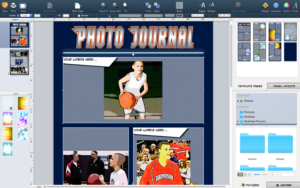Professional Growth Reflection Paper 2
In this paper, I am going to focus on student centered learning and why I believe it is an important teaching style to adopt. Student-centered learning contrasts the more traditional teacher centered learning teaching style which lacks important aspects of teaching. These important aspects are developing relationships, consideration of the students interests and decision making (Jacobs & Renandya, 2019).
Developing relationships is a key component to student-centered learning. This contrasts teacher centered learning in where the teacher teaches in front of the class while students follow the instructions of the teacher. There is minimal interaction between students, instead, the primary interactions are between teacher and student. In a music setting, this can be seen in a traditional concert band class where the teacher directs and conducts the students. Usually in concert band, students do not have opportunities to talk to each other because it will disturb the teacher. In contrast, student-centered learning often incorporates a cooperative learning style in where students work in groups and discuss (Jacobs & Renandya, 2019). Students will share ideas, learn from and with each other. In a music setting, this can effectively be done in a rock band class by structuring the class similarly to a garage band setting.
Another important aspect of student-centered learning is considering the unique needs of a student (Jacobs & Renandya, 2019). I find this is a big problem in music education and is the reason why school music classes often struggle to get participants enrolled. Music classes are typically classical based. This turns students away from enrolling into the program because students often listen to genres other then classical. By incorporating a student-centered teaching approach, a teacher would have to get to know the interests of students and base the class around those interests. This would probably involve learning music other than classical.
Decision making is another component of student-centered learning (Jacobs & Renandya, 2019). Students are faced with a lot more decision making in comparison to teacher centered learning. Students have a greater say in what they want to learn and often discover their own process of achieving their goals. The teacher is more of a guide to the student, while the student makes big decisions. In a music teaching example would be having students choose what musical style they would want to play and make decisions on how they would want to manipulate the music, while the teacher guides them on side. This contrasts a traditional concert band setting where the director usually makes all of the decisions.
In conclusion, the traditional teacher entered approach should be compared with the students centered approach. By emphasizing relationships, the interests of students, and decision making, the student-centered learning approach proves to be a teaching style worth considering.
Bibliography
Jacobs, G. M., & Renandya, W. A. (2019). Student centered cooperative learning: Linking
concepts in education to promote student learning. Springer.

Recent Comments